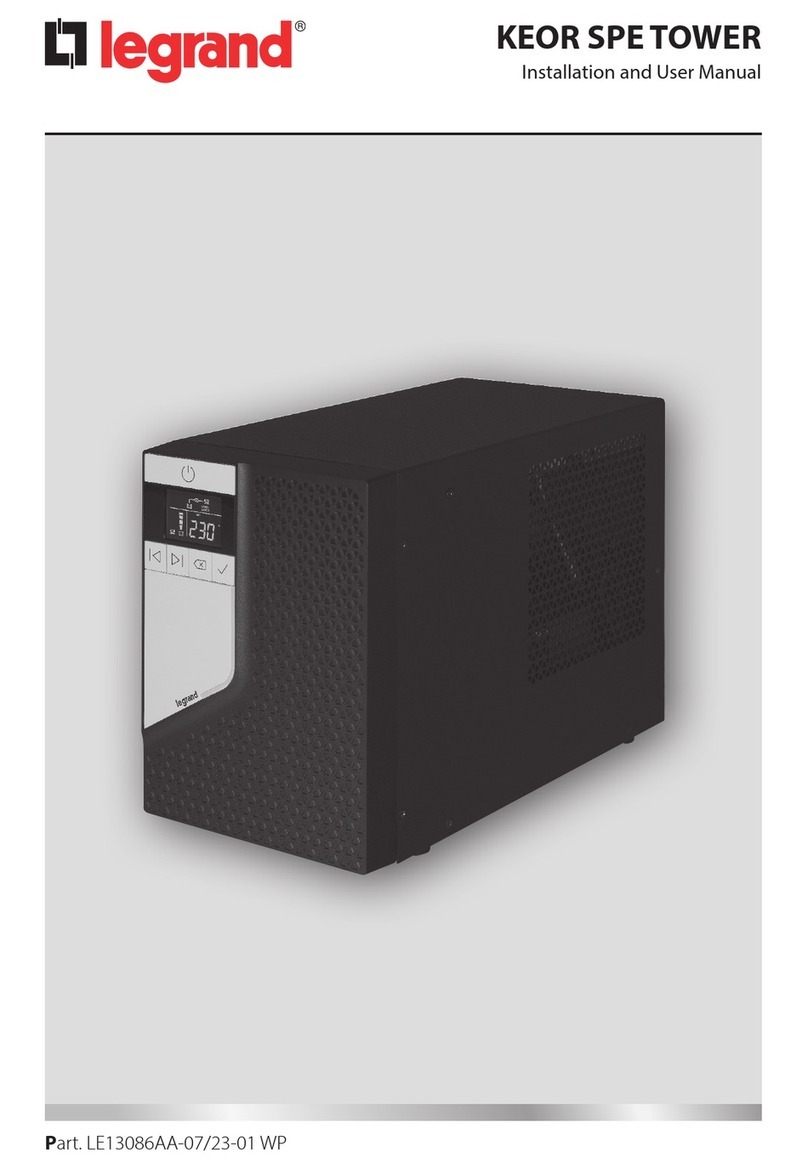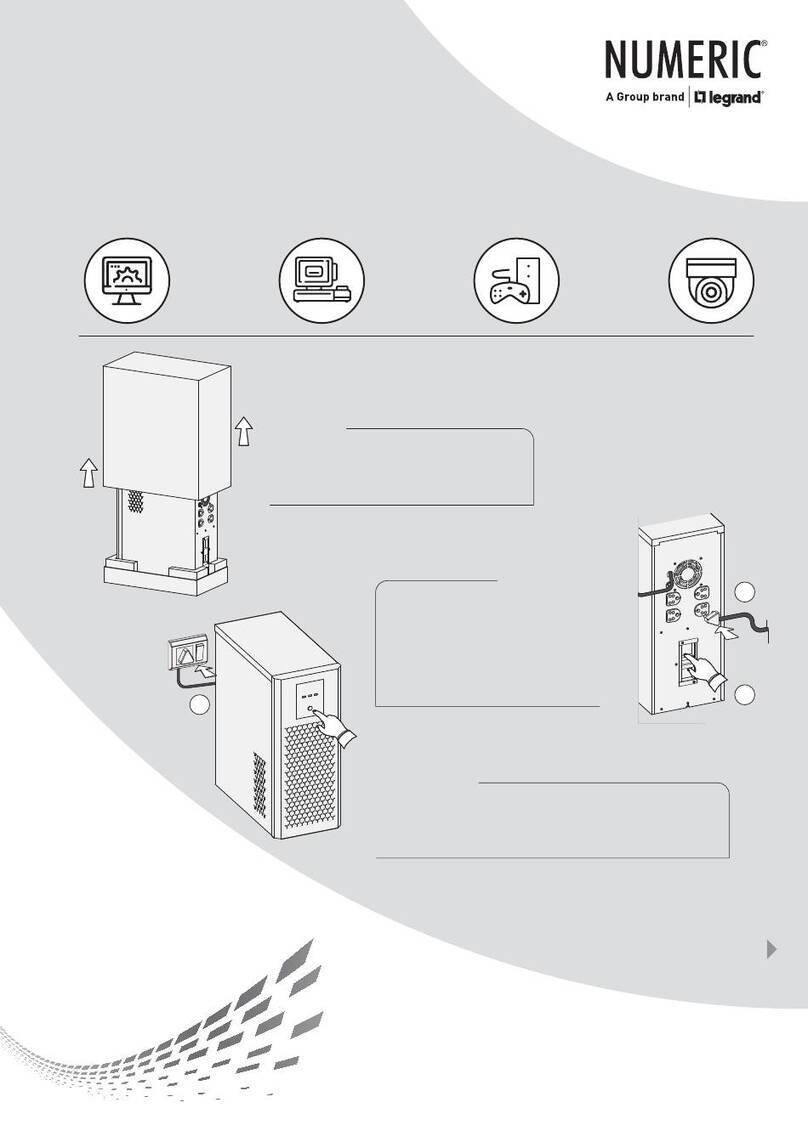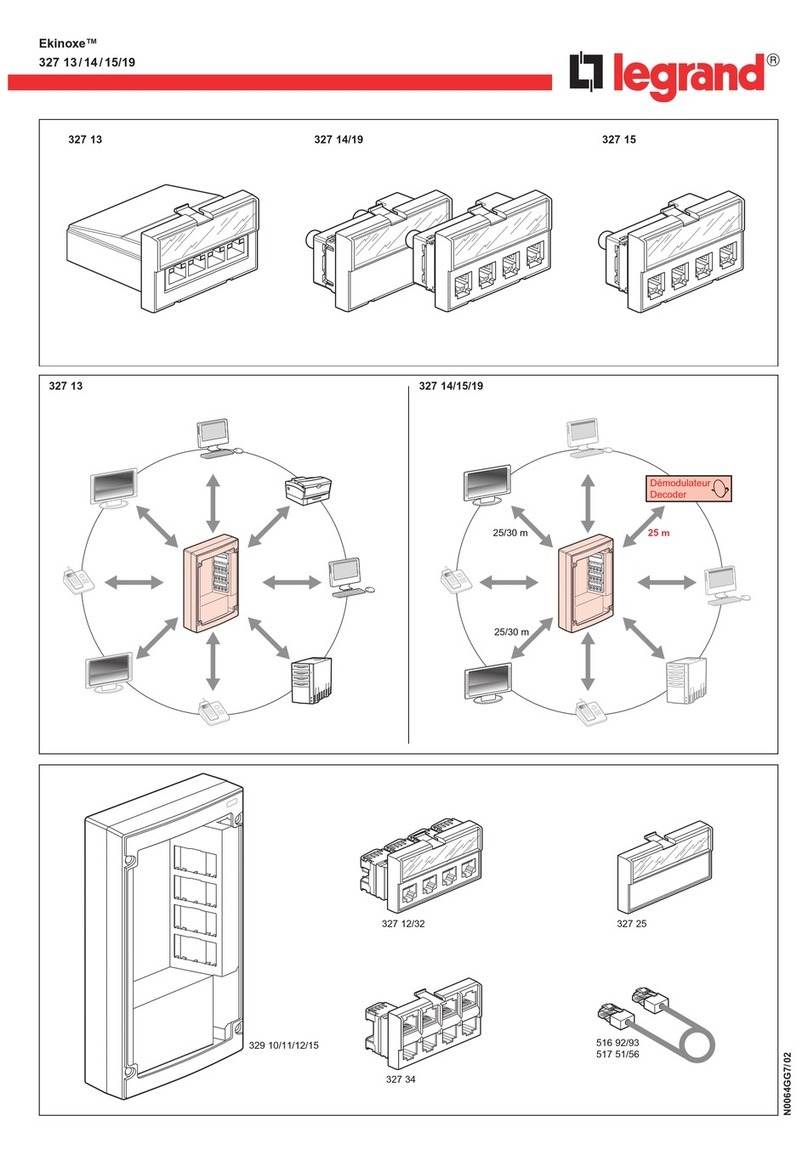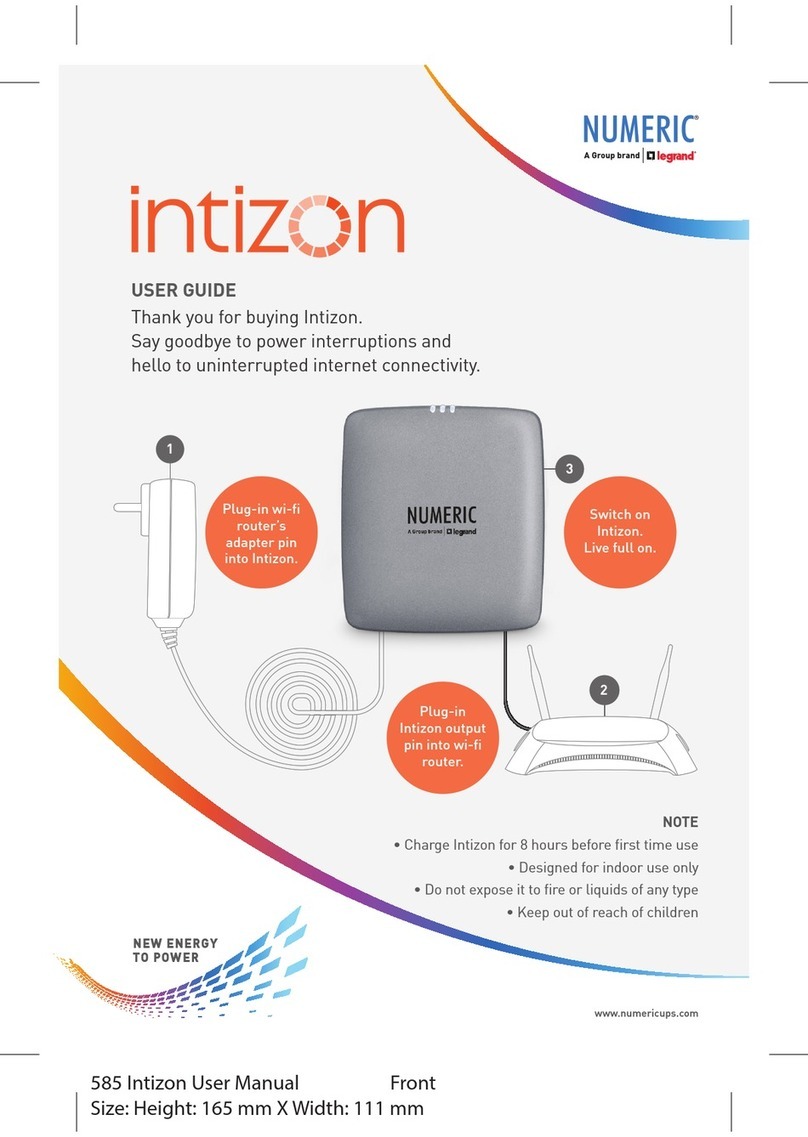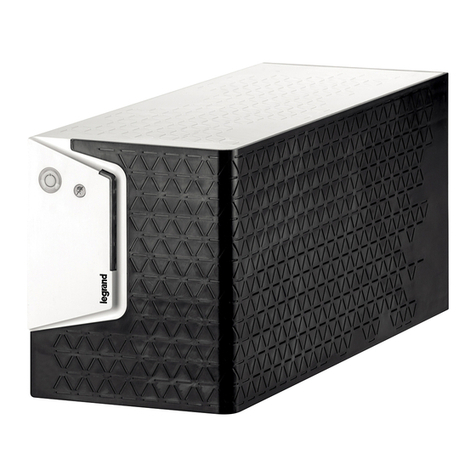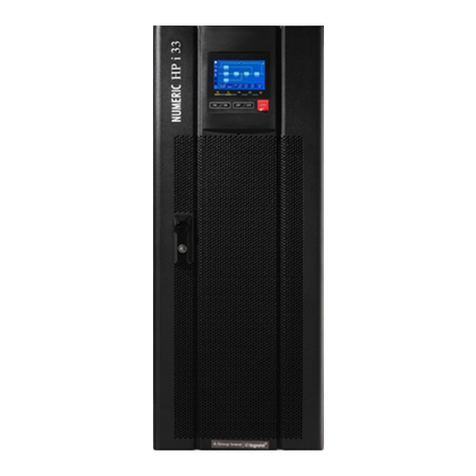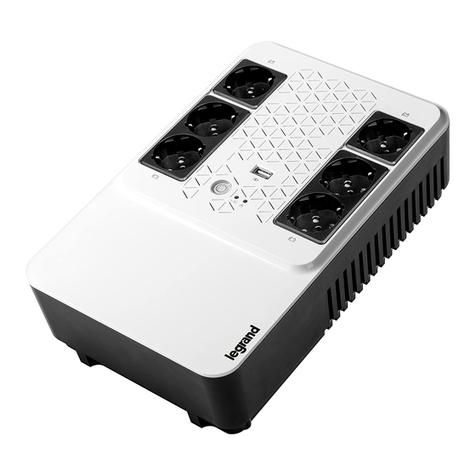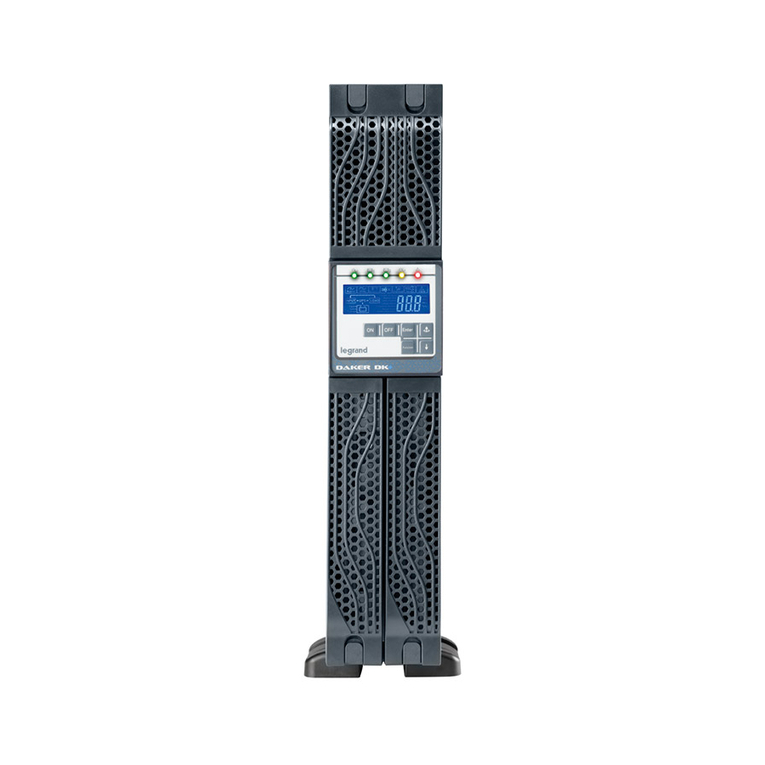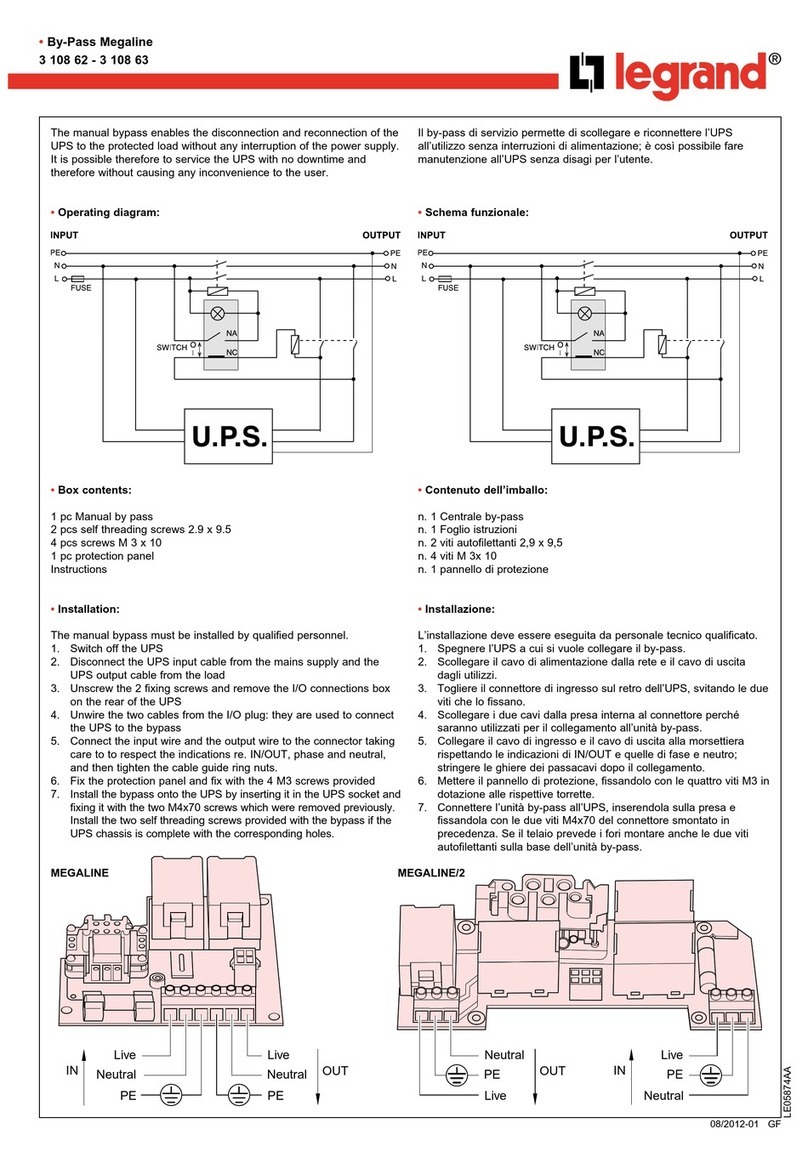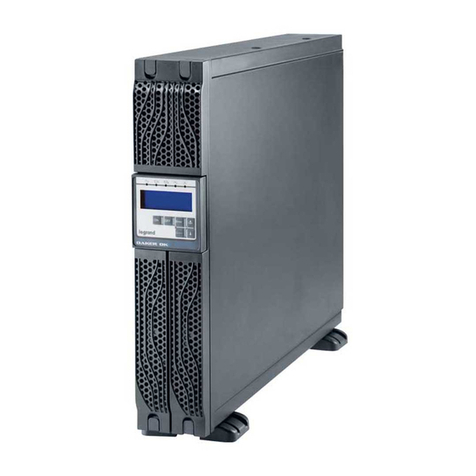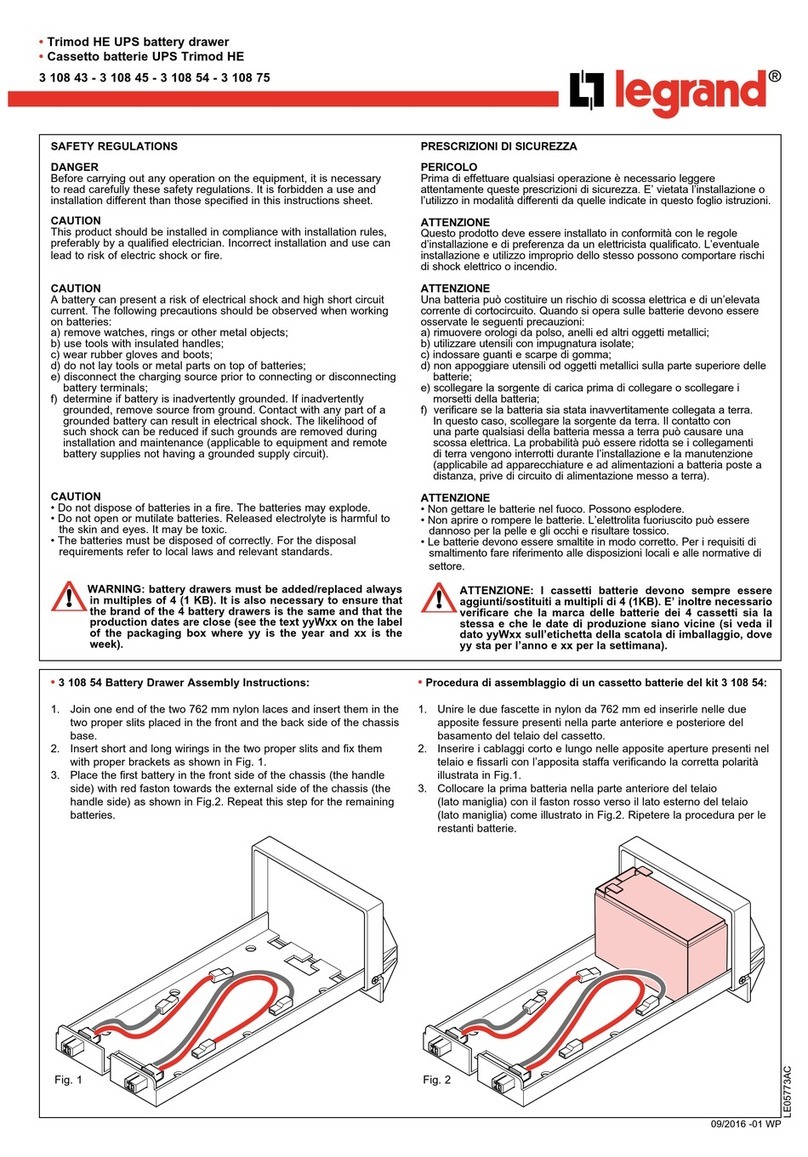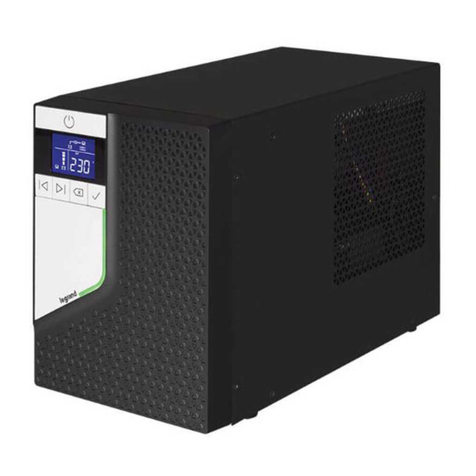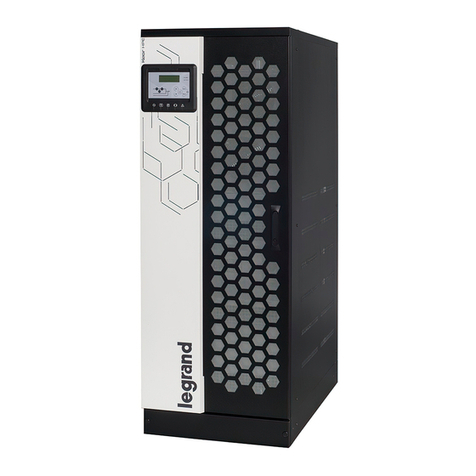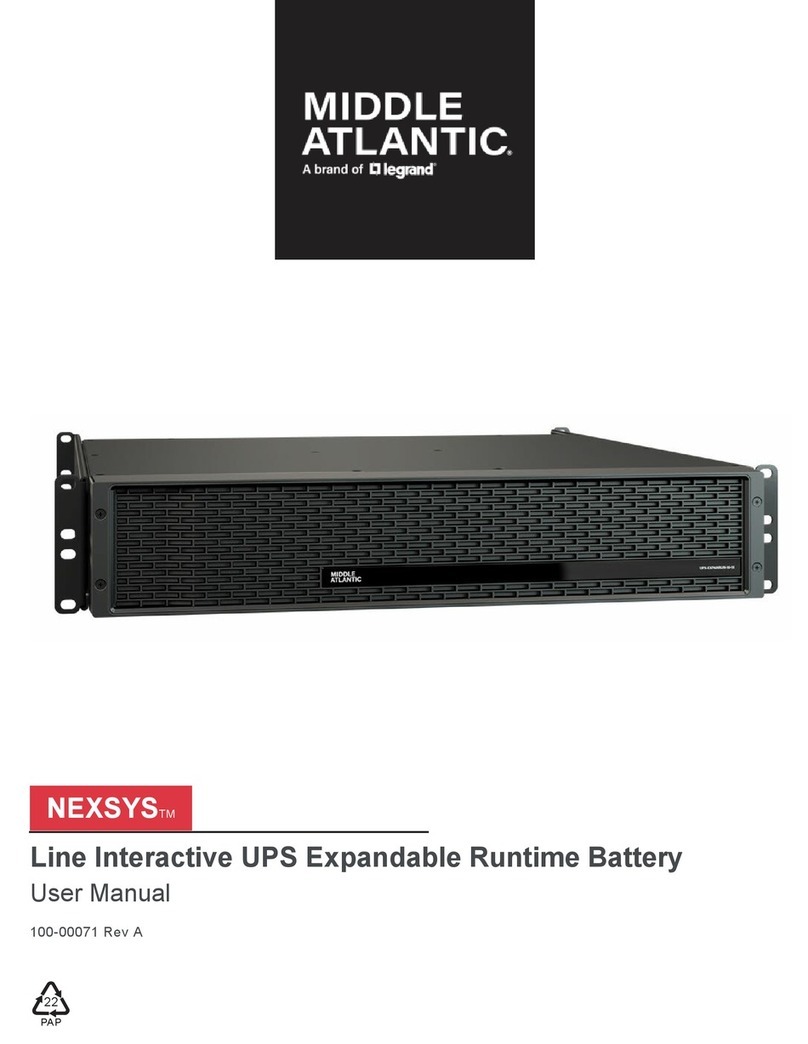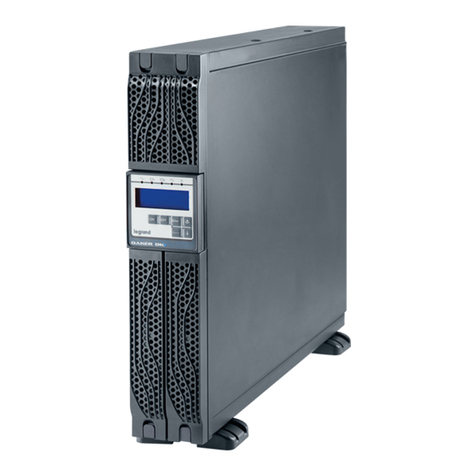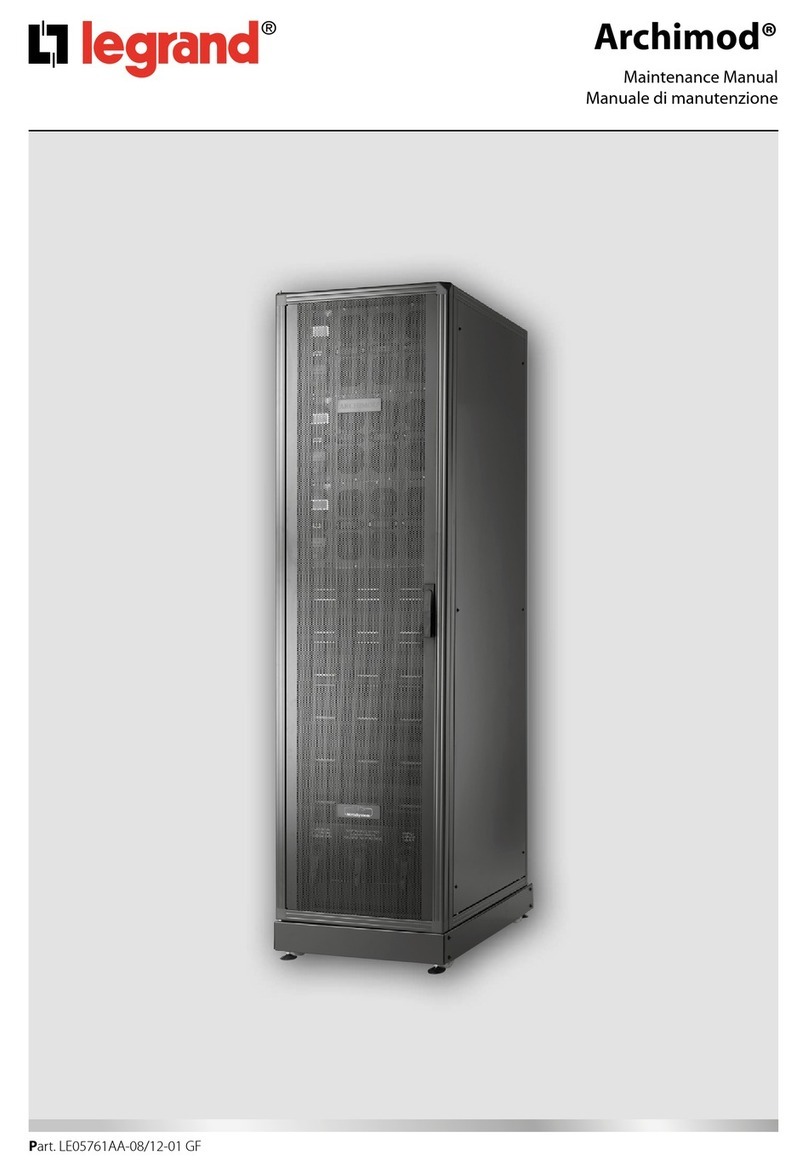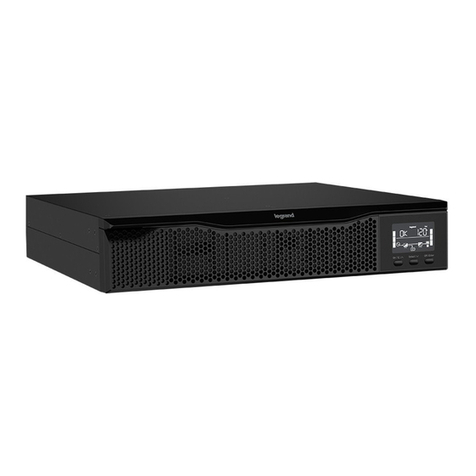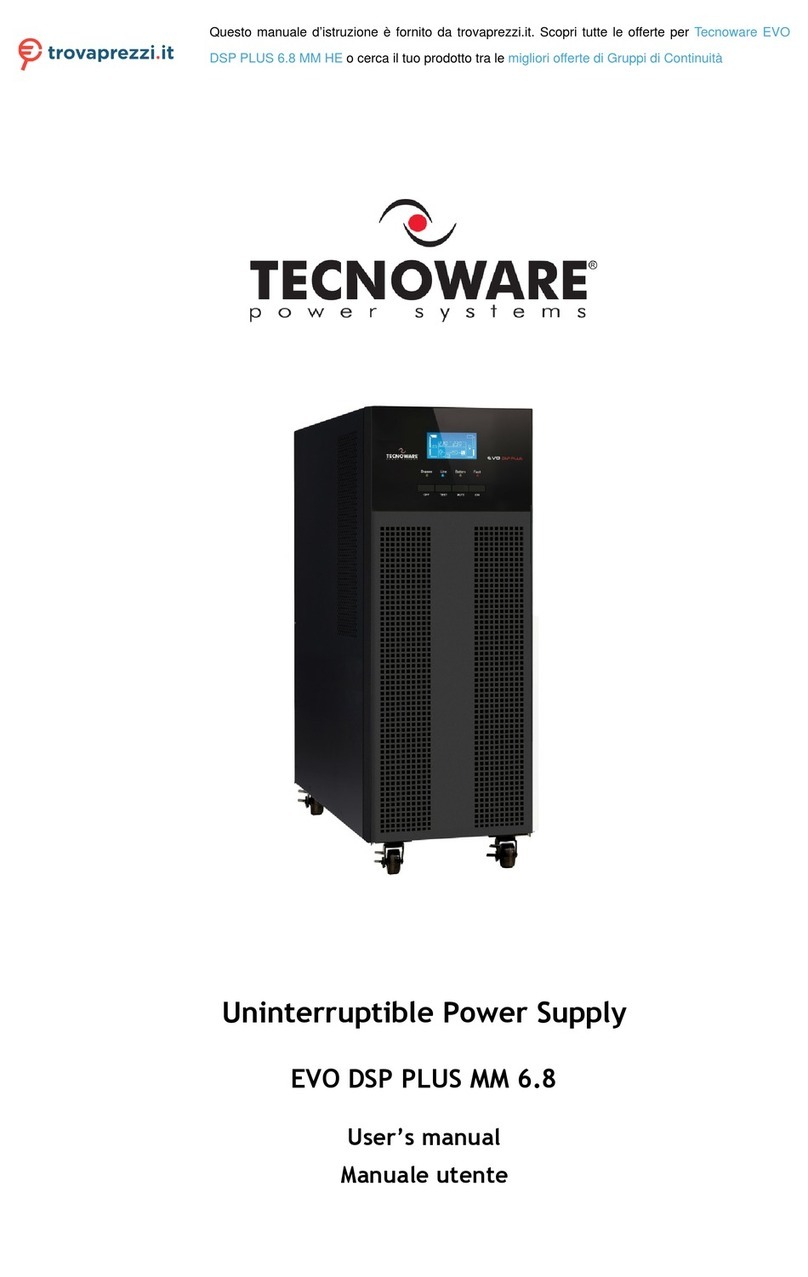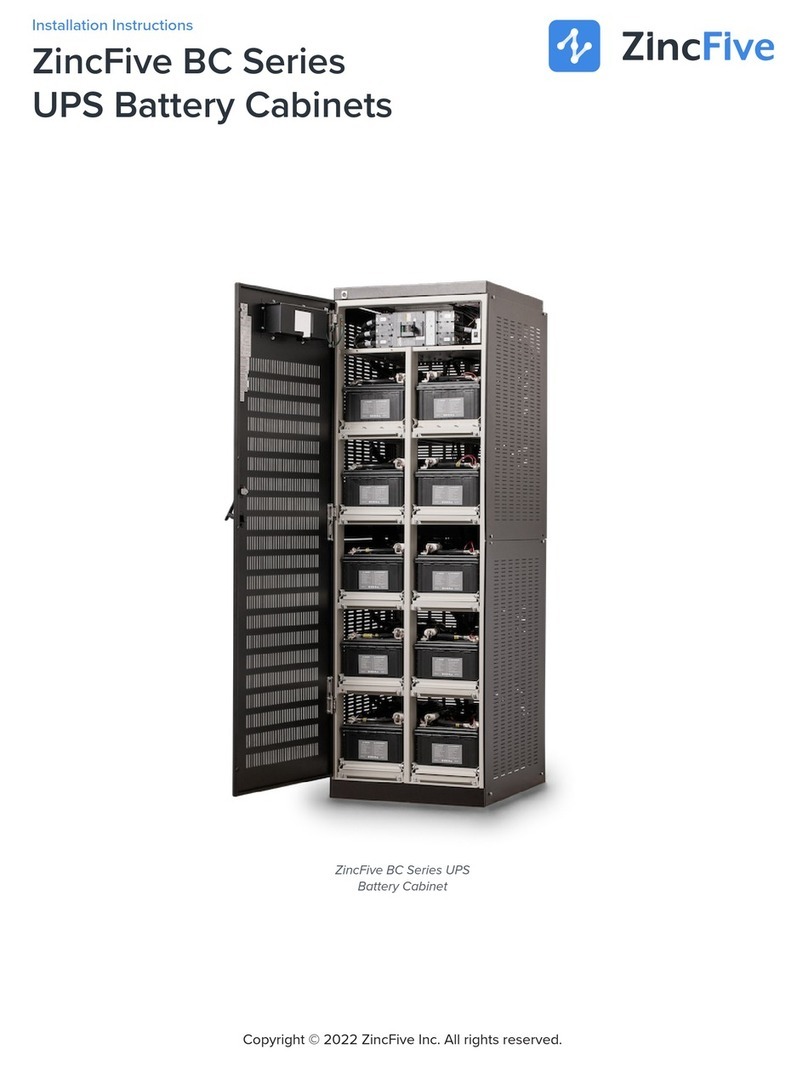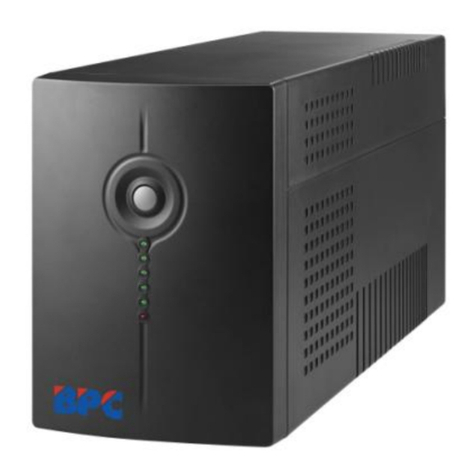KEOR SPE R/T
Installation and User Manual
5
2. Regulatory and safety requirements
This section contains important safety and operating instructions that should always be followed during
the installation, use and maintenance of the UPS.
DANGER
The UPS operates with dangerous high voltages. Only skilled technicians qualified and authorized by
LEGRAND must perform ordinary maintenance operations. Extraordinary maintenance operations
must be carried out by LEGRAND Technical Support Service personnel.
• This product should be installed in compliance with installation rules, preferably by a qualified
electrician. Incorrect installation and use can lead to risk of electric shock or fire. Before carrying out
the installation, read the instructions and take account of the product’s specific mounting location. Do
not open up, dismantle, alter or modify the device except where specifically required to do so by the
instructions. All Legrand products must be opened and repaired exclusively by personnel trained and
approved by Legrand. Any unauthorised opening or repair completely cancels all liabilities and the
rights to replacement and guarantees. Use only Legrand brand accessories.
• Ensure that the mains voltage, frequency, and output load match those of the UPS (check the
product label and the technical specifications).
• If any visible damage is found on the product during the unpacking operation, do not install the UPS
and return it to your reseller or distributor.
• Before supplying any load equipment, ensure the UPS is connected to a grounded mains socket.
• Do not attempt to open or disassemble the UPS; there are no user replaceable parts. Opening the
case will void the warranty and introduces the risk of electric shock.
• Make sure the UPS is completely turned off when it is transported.
• The detachable power supply cable acts as a separation device. The mains socket must be installed
near the UPS and must be easily accessible.
• In case of a mains power supply failure, do not unplug the input cord. Earth continuity must be
ensured to the connected loads.
• Do not plug non-computer-related items such as medical, life-support and house electric equipment
to the UPS output.
• Do not plug laser printers to the UPS outlets due to their high start-up current.
• The UPS functions with TT and TN systems.
• In case of emergency, immediately turn off the UPS and unplug the input cord from the mains.
• Do not allow any liquid or foreign object to enter the UPS.
• The UPS is intended for indoor installation in a ventilated, controlled indoor environment with a range
of temperature between 0°C (+32°F) and +40°C (+104°F) and non-condensing humidity <95%.
• Do not install the UPS in locations with sparks, smoke, and hazardous gas or where there is water
and excessive humidity. Dusty, corrosive, and salty environments can damage the UPS.
• Do not plug the UPS input into its own output.
• Do not attach a power strip or surge suppressor to the UPS to avoid potential overloads.
• Ensure that the output cables are not longer than 10 meters.
• Keep a clearance of 20 cm around the UPS for airflow. Avoid exposing it to direct sunlight or
installing it near heat emitting appliances.
• Do not place the UPS near equipment that generate strong electromagnetic fields or sensible to
electromagnetic fields.
• The batteries should be recharged every 3 months if the UPS is not used. To do so, connect the input
cord to a grounded mains socket.
• To safeguard the batteries life, the UPS should be used in an environment with a temperature range
between +20°C (+68°F) and +25°C (+77°F).
• The UPS is equipped with an auto-restart system. In case of return of the input mains after the end of
battery operation, the UPS turns on to normal operation by supplying the output loads.
• The UPS is equipped with an automatic backfeed protection system.
